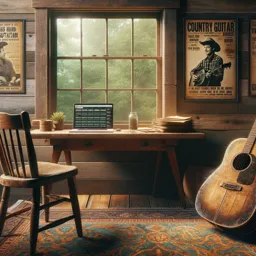Introduction
One of the defining features of blues guitar is its strong emphasis on improvisation. Unlike some genres that stick to written arrangements, blues encourages spontaneity and self-expression through guitar solos and fills. Whether you are just starting out with the electric guitar or looking to take your playing to the next level, mastering blues improvisation is an exciting journey that opens up endless creative possibilities.
The Blues Scale: Your Foundation for Improvisation
The core of blues improvisation lies in the blues scale. This six-note scale is derived from the minor pentatonic scale with the addition of the flatted fifth, commonly known as the “blue note.” Most blues guitar solos and riffs are constructed using this scale, providing a familiar yet expressive sound.
- Practice the A minor blues scale: A – C – D – D# – E – G – A
- Experiment with sliding between notes, especially the blue note (D# in A blues scale)
Call and Response: Conversational Soloing
Blues music often mimics human conversation through a technique known as call and response. In guitar improvisation, this means playing a short melodic phrase (the call) and answering it with a different phrase (the response). Try to mimic the phrasing of the blues vocal lines, playing an idea, then responding to it as if two musicians were exchanging musical ideas.
Phrasing and Dynamics
A great blues solo isn’t just about playing the right notes—it’s about how you play them. Focus on:
- Dynamics: Vary your picking attack for soft and loud passages.
- Phrasing: Use pauses, slides, and vibrato to make your solos more vocal-like.
- Repetition: Repeat motifs to build familiarity, and then surprise with a twist.
Backing Tracks and Jamming
The best way to improve your improvisation skills is to play along with backing tracks. Look for blues progressions in different keys and tempos. Don’t be afraid to experiment—sometimes the best ideas come from happy accidents.
Listening and Inspiration
Enhance your improvisation by listening to legendary blues guitarists. Notice how each player approaches phrasing, note choice, and timing. Try to emulate their style, then blend it with your own to develop a unique sound.
Conclusion
Improvisation is at the heart of blues guitar playing. Mastering it involves practice, attentive listening, and a willingness to explore new sounds. As you continue your journey, you’ll find that improvising not only improves your technical skills but also deepens your connection to the music itself.


























